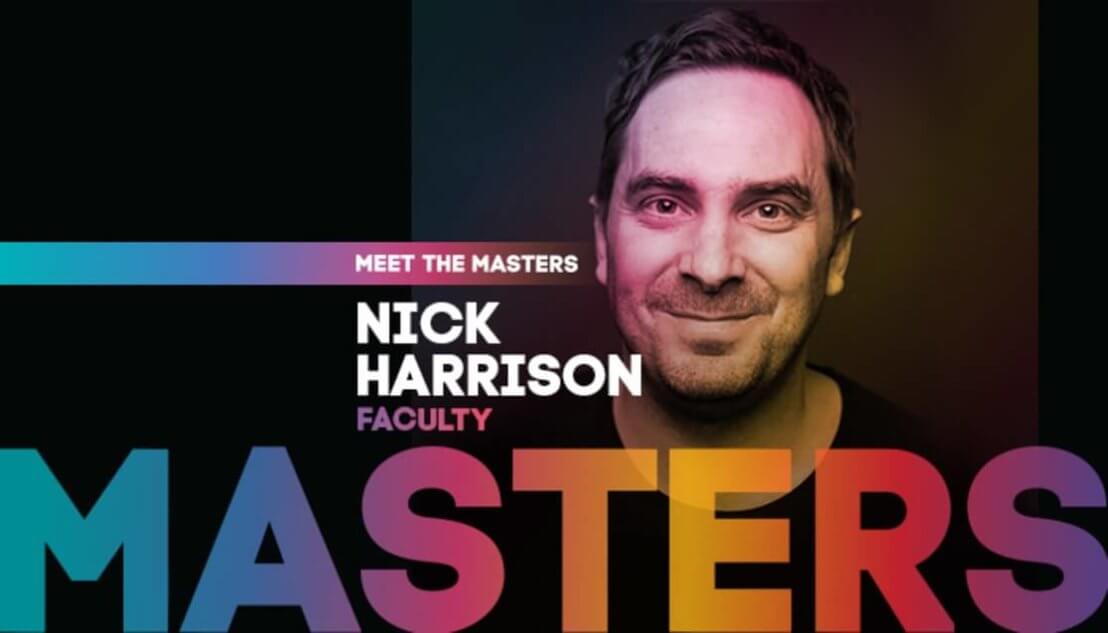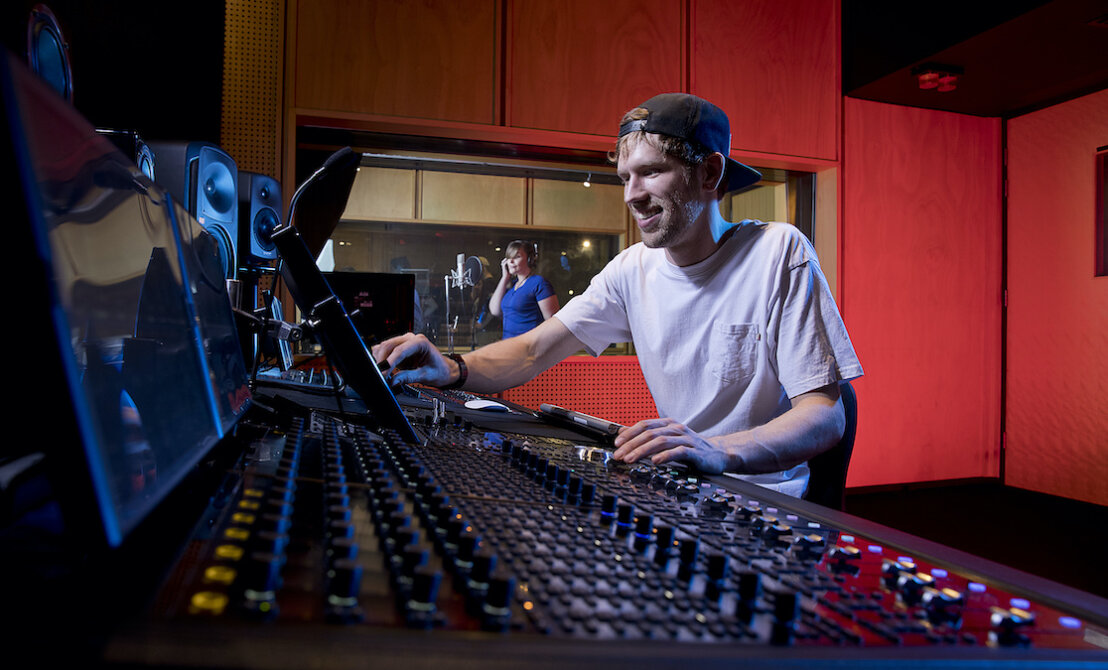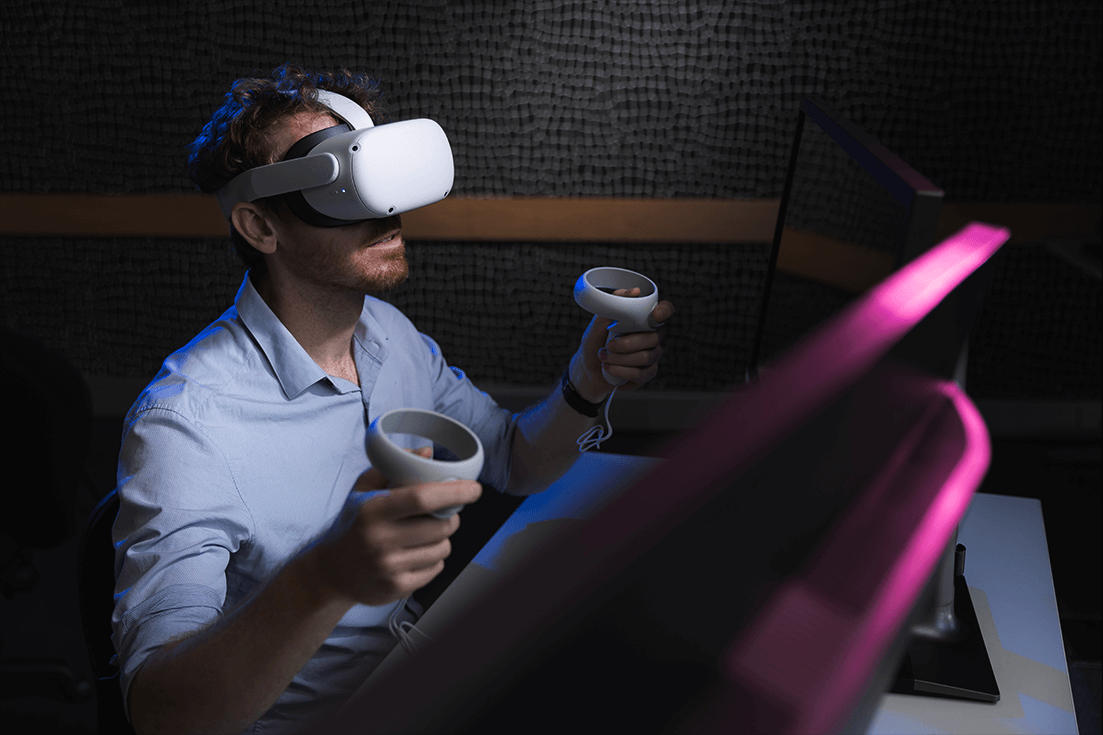
Virtual reality (VR) is becoming more common in the entertainment and building industries. SAE Creative Media Institute’s innovation extends to our talented faculty, who work with cutting-edge hardware and software and often share this skill set with students.
Nick Harrison is an audio lecturer at SAE Melbourne, whose research interests are focused on immersive and interactive sound. Teaching both the undergraduate and postgraduate programs, Nick’s demo of VR head-tracked binaural ambisonic mixing merges sound production skills with cutting-edge technology.
“With SAE’s flexible blended learning approach, I get students familiar with immersive audio production,” explained Nick.
Spatial mixing in VR is new technology, and it helps to augment the traditional methods for panning sound at 360-degree in Audio Production software like Pro Tools Dolby Atmos and Ambisonics mixing. The technology and visualisation allow 360-degree control of the audio sources alongside levelling, acoustics, and automation.
“In the demo, I’ve used a virtual theatre and I’ve played an SAE promo video on the 2D theatre screen.
“The equivalent with traditional analogue or hardware equipment would be mixing for film using the new Dolby Atmos format. An interesting benefit of VR is that the speakers can be positioned anywhere, including under the floor,” said Nick.
In the postgraduate program, Nick applies the tech to the Immersive Audio module in the Master of Creative Industries.
“I use this technology to help demonstrate new immersive mixing tech. The learning is centred around immersive sound design for linear VR, and the students complete 360-degree binaural sound design that can be watched in VR,” added Nick.
Nick also develops audio-based applications via the Unity & Unreal game engine.
“My current project is tracking turntablist scratching techniques using low latency IMUs (inertial measurement units) on records, into Unity for a side-scrolling space shooter. I hope to encourage students to develop their audio endeavours through using new tools like the Unity game engine and offer up my research as inspiration.”













































